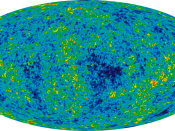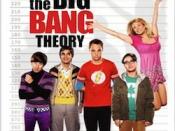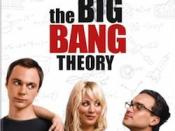The Big Bang Theory is currently the most widely accepted theory that pertains to the origin of the universe. The theory speculates that ten to twenty billion years ago, the universe consisted of a compact ball of hydrogen, protons, neutrons, electrons, and their anti-particles in addition to radiation. There was no distinction among planets, stars, suns, or galaxies. Five billion years ago, the compact hydrogen "soup" blasted apart with huge force, matter was hurled in all directions, and the universe doubled in size. This expansion of the universe is believed to be still occurring.
The theory is based on the mathematical equations, known as the field equations, of the general theory of relativity introduced in 1915 by Albert Einstein. In 1922, Alexander Friedmann, a Russian physicist, provided a set of solutions to the field equations. His solutions have acted as a framework of sorts for much of the past and current theoretical work on the big bang theory.
It was in 1927 that the Big Bang Theory was first purposed by Abbé Georges Lemaître, a Belgian Jesuit priest. He suggested that the universe began with the explosion of a primeval super atom and has continued to expand ever since. This was based on the recession of spiral nebulae. Edwin Hubble, an American astronomer, provided some of the greatest supporting evidence for the theory with his 1929 discovery that the light of distant galaxies was universally shifted toward the red end of the spectrum. This proved that the galaxies were moving away from each other. He found that galaxies farther away were moving away faster, showing that the universe is expanding consistently. Later even more progress was made in the 1940s when George Gamow, a Russian American physicist, developed a theory that fit with Friedmann's solutions in which the universe expanded...


